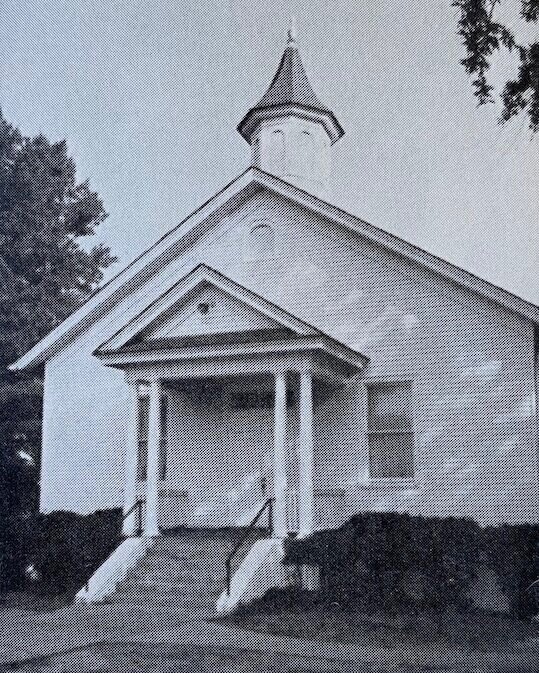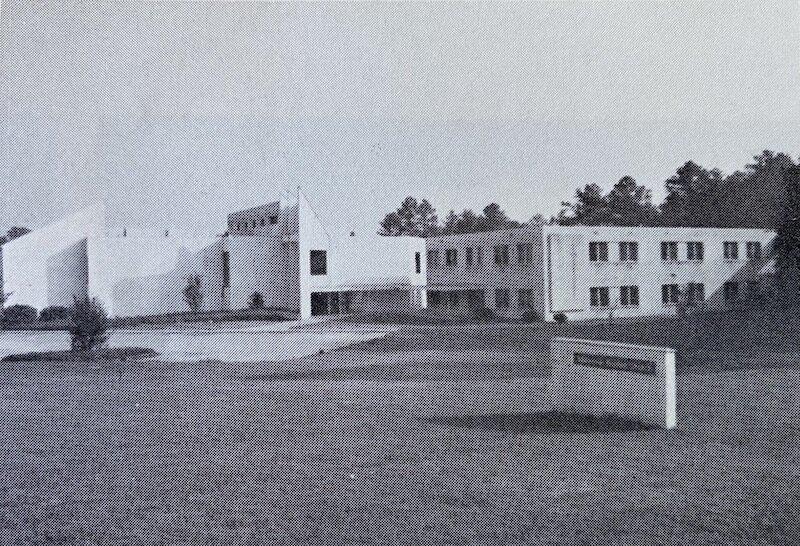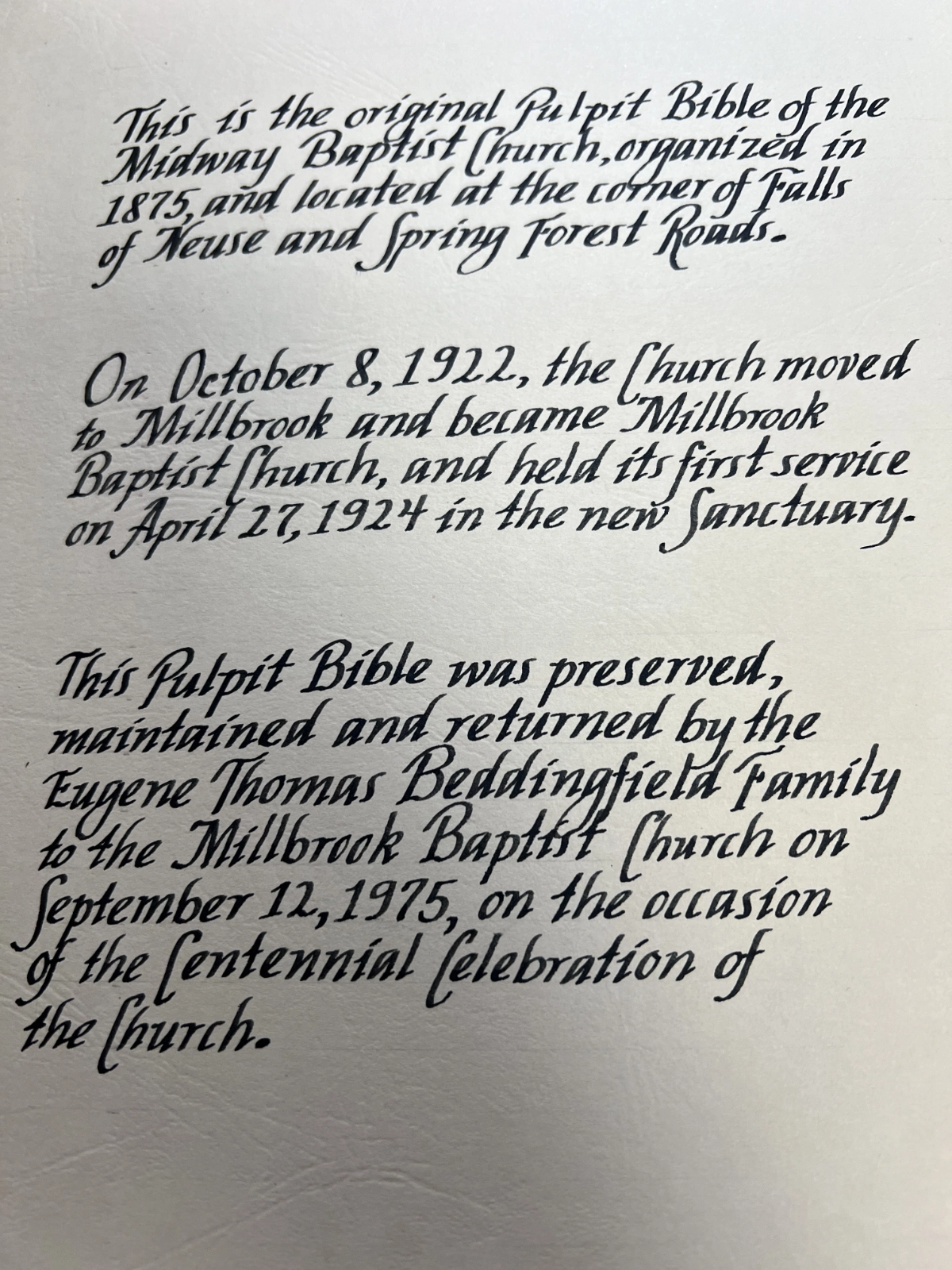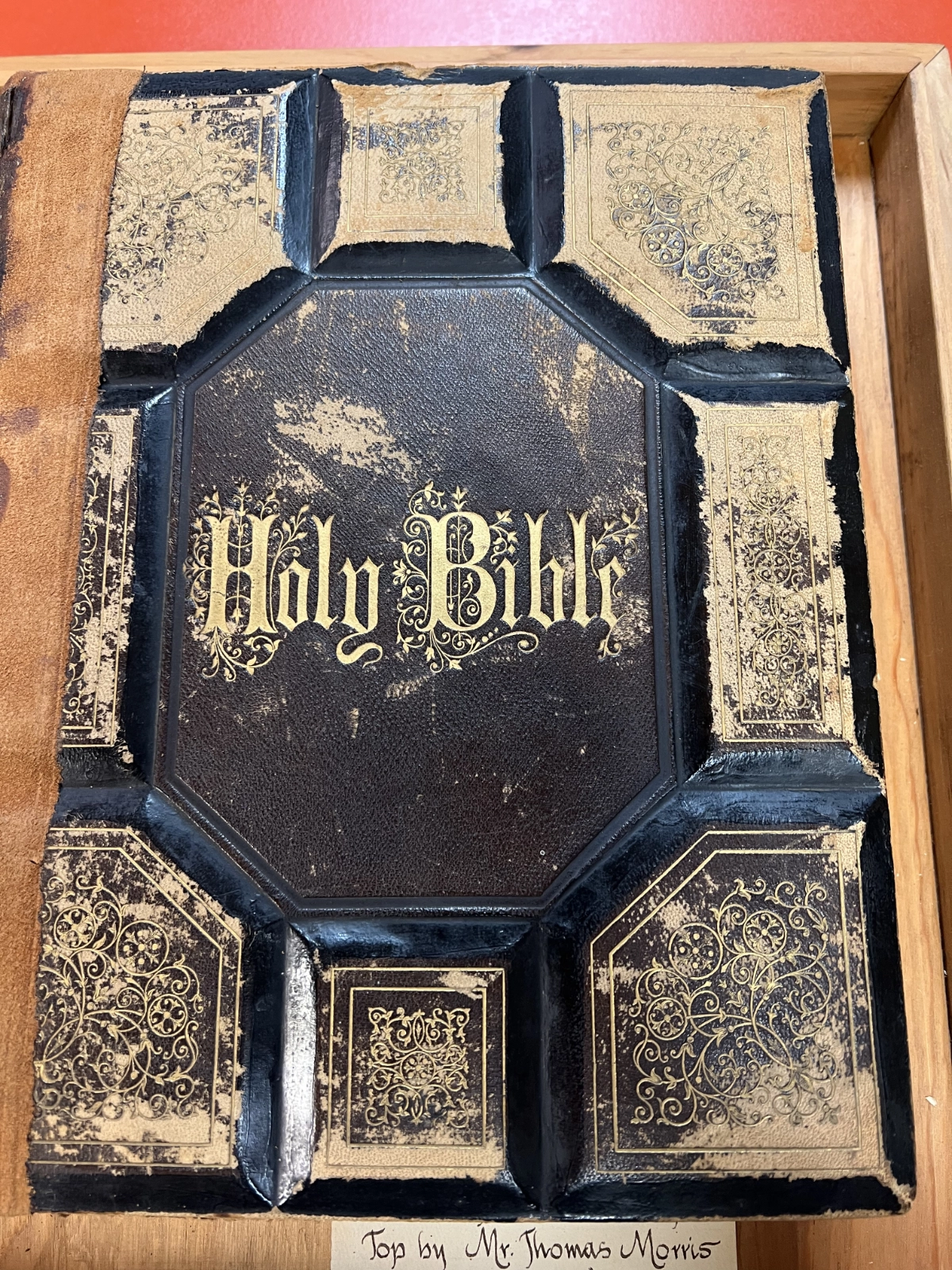Our History - Millbrook Baptist Church
Brush Arbor Blessings
In the late 19th century, residents of North Raleigh realized their dependence on God and felt a strong spiritual need to gather on the Lord’s Day. The cosmopolitan neighborhoods of Millbrook remained a rural farm area at the time. Most of the farms ranged from 50 to several hundred acres, so the families did not live close to one another. The main crops were corn, cotton, wheat and vegetables. Each family owned cows, chickens, and hogs. Before the area had churches, the people assembled at a brush arbor for corporate worship to seek God’s blessings.
Midway Baptists
Several other Baptist churches came first to the area, but a great distance still separated New Hope and Mt. Vernon Baptist Churches. Local residents felt a place of worship was needed between those two locations. In 1875, Elias K. Chappell generously donated a tract of land at the corner of Falls of Neuse and Spring Forest Roads. Members of the new church soon donated time and material and built Midway Baptist Church.

Once or Twice a Month for 70 Years
The first preachers came from Raleigh or Wake Forest, usually arriving on Friday night by horse and buggy and sometimes walking from Wake Forest. Services were held once a month on Saturday afternoon and Sunday. Second and fourth Sundays were later designated as preaching Sundays, a practice that continued until 1945. Millbrook Baptists did not want to interfere with services held at Sydney, the nearby Methodist Church that met on first and third Sundays.
Midway to Millbrook
Travel became easier with the coming of the automobile at the turn of the century. The church then moved to its present location and changed its name to Millbrook Baptist Church. In 1922, an acre of land was purchased from Mr. J.B. Green and the church sanctuary was built. A consolidated state high school was also built in the area, so the church held services at Millbrook High School until its new building was completed.
Rural to Urban
The first service in the new building was held on April 27, 1924. At that time the Millbrook community consisted of a post office, a store, a cotton gin and several homes near the school. Today the church thrives in an urban context undergoing constant change, even as some of its members recall and delight in their rural past
Open and Inclusive
For much of its history, Millbrook has been open to the call of all persons to ministry. The church appointed its first female deacons in the early 1920s. In the midst of Jim Crow, the people of this congregation stated adamantly that any and all would be seated and welcomed for worship in their sanctuary.
Active and Versatile
Millbrook Baptist Church has supported a variety of local and global ministries addressing social, ecclesiastical, and evangelistic concerns. The church was the birthplace of Habitat for Humanity in Wake County and a founding participant in both the Raleigh CROP Walk and Wake Interfaith Hospitality Network.
During the pandemic of 2020-2021, the church’s pastors pivoted to conduct services via the internet that required new skills in video editing, website design, and virtual conferencing. The church cautiously began to hold many outdoor services again as the country slowly reintroduced in-person gatherings. Meeting outdoors represented a twenty-first century return to the church’s nineteenth-century brush arbor blessings.
As new chapters of its history are written, Millbrook continues to look for innovative and creative ways to share God’s love in this community and beyond.



